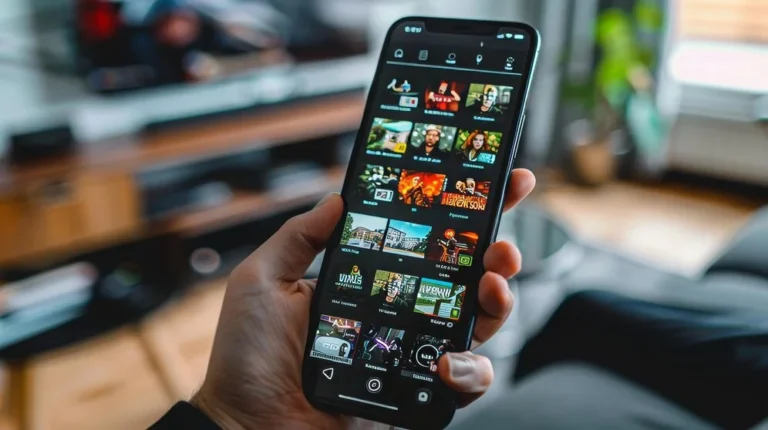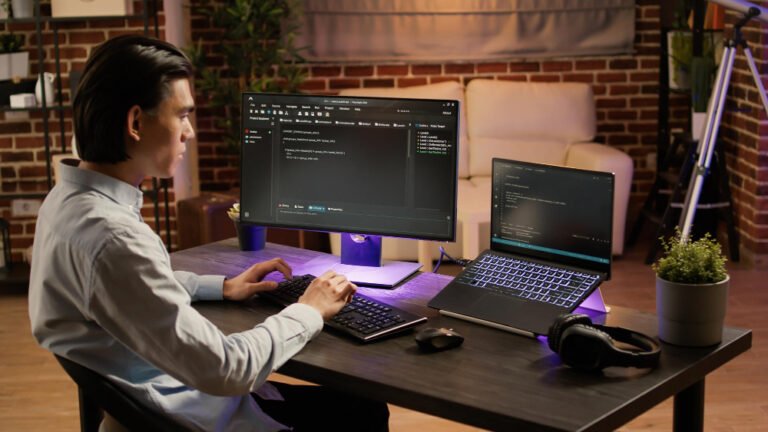Hiring Diverse Game Development Teams for Educational Games
Diversity in game development goes beyond meeting quotas or ticking off boxes. It’s about cultivating a team with varied backgrounds, experiences, and perspectives that can contribute to a richer, more nuanced gaming experience. A diverse talent pool brings together individuals with different cultural insights, problem-solving skills, and creative ideas, all of which are essential for crafting educational content that resonates with a wide audience.
Diversity among educational game developer helps ensure that learning experiences are inclusive, culturally relevant, and engaging for all learners. By tapping into a wide range of skills, backgrounds, and viewpoints, development teams are better equipped to build games that truly educate and inspire.
The Benefits of Team Diversity
Diverse teams have a competitive edge in the gaming industry. Studies have shown that diverse teams outperform their more homogeneous counterparts in problem-solving and innovation. This is because they are more likely to consider a broader range of solutions and viewpoints, leading to more creative and effective game designs.
For educational games, which aim to teach and engage players, diversity in development teams ensures that the content is relatable to a more varied audience. By incorporating different cultural references, languages, and experiences, these games can reach learners from different backgrounds, making the educational content more inclusive and accessible.
Moreover, diverse teams bring unique perspectives that can help identify potential biases or gaps in content. This proactive approach ensures that the educational material is both comprehensive and free from stereotypes, enhancing the learning experience for all users.
Enhancing Creativity and Innovation
Diverse teams are a breeding ground for creativity and innovation. When team members come from different backgrounds, they bring a wide array of ideas and approaches to the table. This variety fosters a dynamic environment where traditional boundaries are challenged, leading to groundbreaking game concepts and designs.
Innovation thrives in a setting where diverse thoughts and experiences collide. By encouraging open dialogue and collaboration among team members, game developers can push the boundaries of what’s possible in educational gaming. This not only results in more engaging games but also in content that is more reflective of the diverse world in which we live.
Furthermore, the infusion of diverse cultural elements into game design can lead to unexpected and delightful discoveries. These elements can serve as a bridge to connect players from different backgrounds, fostering a shared understanding and appreciation of various cultures through the medium of gaming.
Representation in Virtual Reality Content
The immersive nature of VR content amplifies the need for diverse representation. When players step into a virtual world, they experience it as if they were truly there. Therefore, the characters and narratives presented in VR games can have a profound impact on how players see themselves and others.
When educational VR content reflects a wide spectrum of identities and stories, it allows players to see themselves represented in the game, fostering a sense of belonging and empathy. Representation in VR can challenge stereotypes, broaden worldviews, and promote understanding among different cultures and communities.
Diverse representation in VR also serves as a mirror, reflecting the rich tapestry of human experiences and cultures. By incorporating diverse narratives, players can explore worlds that are both familiar and foreign, expanding their understanding and empathy for others.
Moreover, VR’s immersive capabilities provide a unique opportunity to experience life from another’s perspective. This can be a powerful tool in education, helping players develop skills such as empathy and cultural awareness that are crucial in our interconnected world.
Hiring Strategies for Diverse Game Development Teams
Building a diverse game development team requires intentional effort and strategic planning. Here are some strategies to consider:
Broadening the Talent Pool
To hire virtual reality developers from diverse backgrounds, companies must expand their recruitment efforts. This includes attending career fairs at universities with diverse student bodies, partnering with organizations that support underrepresented groups in tech, and using inclusive language in job postings to attract a wider range of applicants.
It’s also important to leverage online platforms and communities that cater to diverse talent pools. By engaging with these platforms, companies can reach candidates who may not be actively seeking new opportunities but are open to the right offer.
Furthermore, companies should consider offering internships and mentorship programs specifically designed for individuals from underrepresented backgrounds. These programs can serve as a pipeline for discovering and nurturing diverse talent, ultimately leading to a more inclusive workforce.
Fostering an Inclusive Workplace Culture
Once diverse talent is hired, it’s essential to create an inclusive workplace culture where all team members feel valued and supported. This includes providing mentorship opportunities, encouraging open communication, and implementing policies that promote work-life balance and diversity training.
Creating an inclusive culture requires commitment from leadership to foster an environment where everyone feels empowered to contribute. This can be achieved through regular diversity and inclusion training, as well as establishing employee resource groups that provide support and networking opportunities.
Moreover, feedback loops should be established to ensure that team members feel heard and that their concerns are addressed promptly. An open-door policy can encourage employees to share their experiences and suggestions, further enhancing the inclusivity of the workplace.
Encouraging Diverse Narratives
Game developers should actively seek out and encourage diverse narratives in their projects. This could involve collaborating with writers and consultants from various backgrounds to ensure authenticity and accuracy in storytelling. By doing so, developers can create educational games that are not only engaging but also reflective of the diverse world we live in.
Incorporating diverse narratives requires a conscious effort to move beyond traditional storytelling tropes and explore new perspectives. This might mean highlighting lesser-known histories, cultures, and experiences that can provide fresh insights and learning opportunities for players.
Developers should also consider integrating feedback from diverse focus groups to refine their narratives and ensure they resonate with a broad audience. This iterative process not only improves the content but also demonstrates a commitment to authenticity and representation.
Case Studies: The Impact of Diversity on Educational Games
Case Study 1: “Journey to the Ancient World”
“Journey to the Ancient World” is an educational VR game developed by a diverse team of historians, educators, and game designers. The game takes players on an immersive journey through ancient civilizations, allowing them to explore the daily lives, customs, and innovations of different cultures. By incorporating authentic cultural elements and voices, the game provides a more accurate and engaging learning experience.
The development team included experts from various fields, ensuring that the historical content was both accurate and engaging. This collaboration resulted in a game that not only educates but also inspires curiosity and exploration among players.
Furthermore, the game’s diverse team was able to identify and address potential cultural sensitivities, creating a respectful and inclusive representation of ancient cultures. This attention to detail enhances the educational value of the game and fosters a deeper understanding of history among players.
Case Study 2: “Global Harmony”
“Global Harmony” is a VR game focused on teaching conflict resolution and empathy. Developed by a team with members from various ethnic and cultural backgrounds, the game features stories and scenarios inspired by real-world conflicts. Players learn to navigate these challenges through dialogue and cooperation, promoting understanding and peaceful solutions.
The diverse development team brought firsthand experiences and insights into conflict resolution, enriching the game’s narratives and scenarios. This authenticity allows players to engage more deeply with the content, fostering empathy and understanding.
In addition, “Global Harmony” includes multiple perspectives, enabling players to understand and appreciate different viewpoints. This approach not only enhances the educational value of the game but also encourages players to apply these lessons in real-world situations.
Conclusion: The Future of Diverse Educational VR Content
As the gaming industry continues to evolve, the demand for diverse and representative content will only grow. By hiring diverse game development teams, companies can create educational VR experiences that resonate with a global audience, inspire empathy and understanding, and prepare the next generation for a more inclusive world.
In conclusion, the significance of diversity in game development extends far beyond the creation of engaging and educational content. It’s about shaping the future of gaming to be more inclusive, representative, and impactful. As we move forward, let us embrace the power of diversity to enrich the gaming experience for all players.
The path forward involves continuous learning and adaptation, as new voices and stories emerge. By prioritizing diversity and representation, the gaming industry can lead the way in promoting cultural understanding and empathy through its innovative storytelling and immersive experiences.






